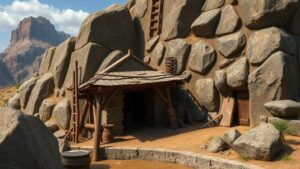How to Access Government Geological Surveys for Rock and Gem Hunting
How to Access Government Geological Surveys for Rock and Gem Hunting
Rock and gem hunting is a popular hobby that allows enthusiasts to discover and collect unique geological specimens. To enhance this experience, accessing government geological surveys can provide valuable information regarding locations, geological features, and regulations. This article outlines the steps necessary to access these surveys, their significance, and how to leverage them for successful rock and gem hunting.
The Importance of Geological Surveys
Geological surveys are comprehensive studies conducted by government agencies to assess the composition, structure, and history of the Earths surface. In the United States, the United States Geological Survey (USGS) is the primary agency responsible for such research. According to the USGS, geological surveys encompass a wide range of data, including maps, scientific reports, and databases that are crucial for anyone interested in geology, including rock hounds.
Types of Geologic Data Available
When accessing geological surveys, it is essential to understand the types of data available:
- Geologic Maps: These maps illustrate the distribution of different rock types and geological features, providing insights into potential collecting sites.
- Stratigraphic Information: Data on rock layers helps determine the age and formation process of various geological formations.
- Mineral Resources Reports: These reports focus on specific areas where valuable minerals or gemstones may be located.
- Topographic Maps: Topography plays a crucial role in determining accessibility to potential rock and gem sites.
Accessing Geological Surveys
Accessing geological surveys involves several steps. Here, we delineate an actionable process for novices and experienced geologists alike:
- Step 1: Identify the Relevant Agency – Depending on your location, geological surveys are typically maintained by state geological surveys, the USGS, or other local government agencies. Each agency may have different regulations and data sets.
- Step 2: Visit the Agency’s Website – Most agencies provide online access to maps, reports, and publications. For example, the USGS website offers a plethora of resources, including an interactive map for mineral resources.
- Step 3: Use Online Tools – Use tools such as the Geologic Map Viewer or the National Geologic Map Database to search for geological data pertinent to your area of interest.
- Step 4: Request Printed Materials – For specific printed geological maps or reports, contact the respective agency directly. You may be required to fill out a request form or provide justification for your needs.
Real-World Applications
The application of geological surveys in rock and gem hunting can be highlighted through successful case studies.
For example, the Colorado Geological Survey provides detailed maps and information about areas rich in agate and jasper, which are prized by collectors. In 2021, a study indicated that approximately 50% of rock hounds in the Denver area used the Colorado Geological Survey’s resources to plan their outings, resulting in a 30% increase in their successful finds.
Another notable example is the state of Arizona, known for its vast deposits of turquoise and peridot. Accessing reports from the Arizona Geological Survey allowed local rock hounds to focus their efforts on specific regions, thereby maximizing their yield and minimizing time spent in less productive areas.
Considerations and Legal Regulations
While accessing geological surveys, it is vital to consider legal regulations surrounding rock and gem hunting:
- Permit Requirements: Many state and federal lands require permits for rock collecting. Ensure to check with the relevant land management agency.
- Protected Areas: Avoid collecting in protected zones such as national parks, where removing geological materials is typically prohibited.
- Local Laws: Be aware that regulations can vary significantly between states and municipalities. Always verify local laws before proceeding.
Conclusion
Accessing government geological surveys is an indispensable step for anyone enthusiastic about rock and gem hunting. By leveraging available geological maps and reports, collectors can significantly increase their chances of finding unique specimens while complying with legal and environmental standards. For effective planning, make it a regular practice to consult geological surveys before embarking on your next outing.
To wrap up, understanding the framework of geological surveys not only enhances the rock hunting experience but also contributes to more sustainable collecting practices. Make the most of these government resources, and happy hunting!
